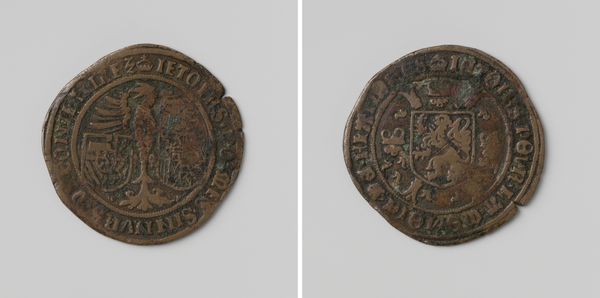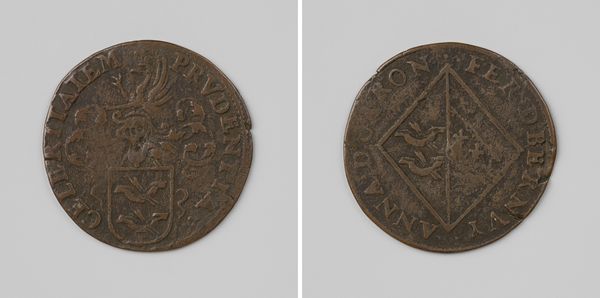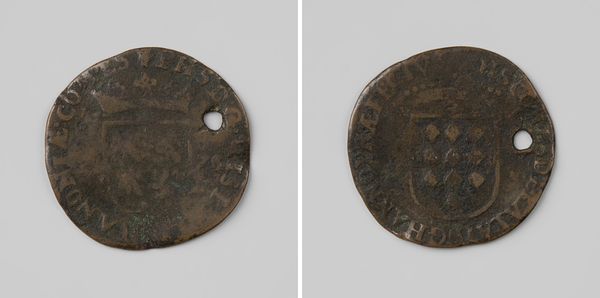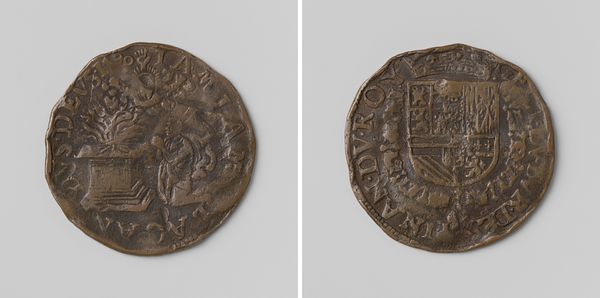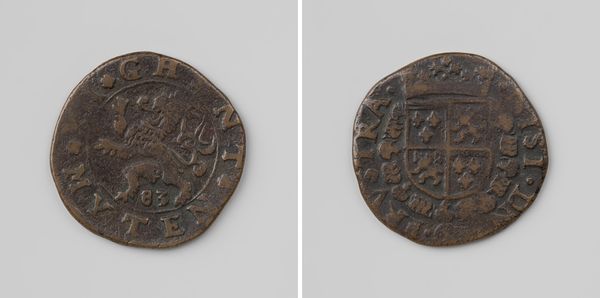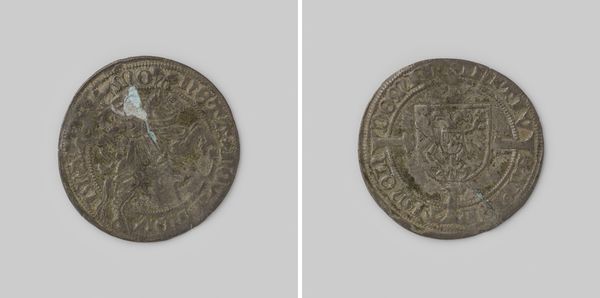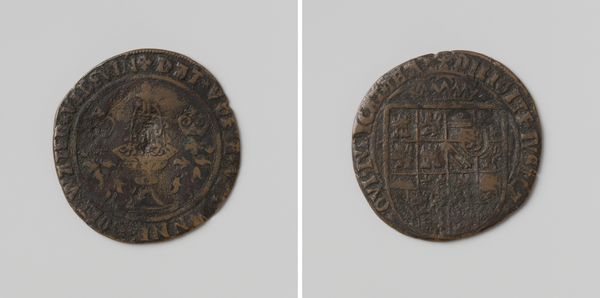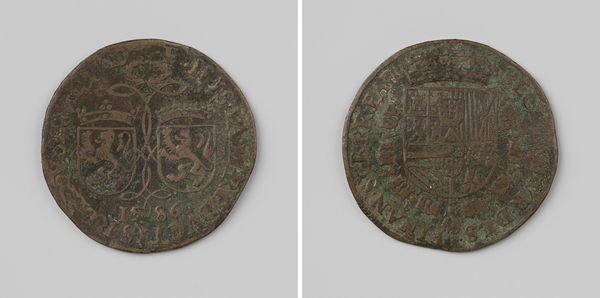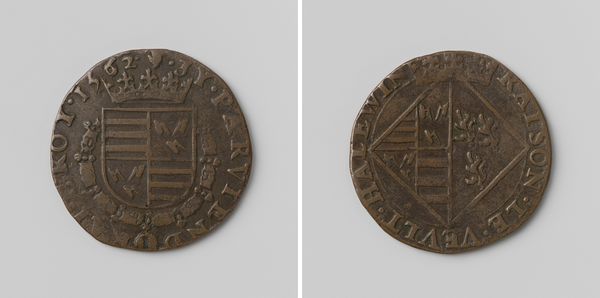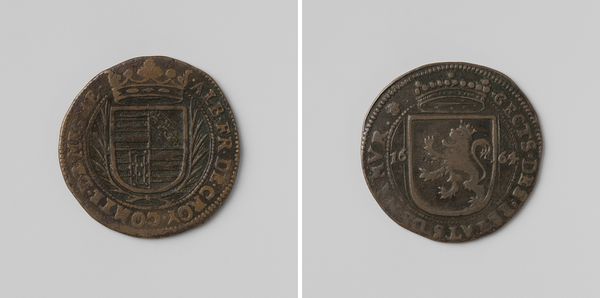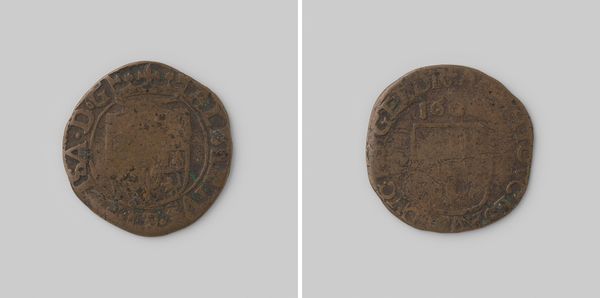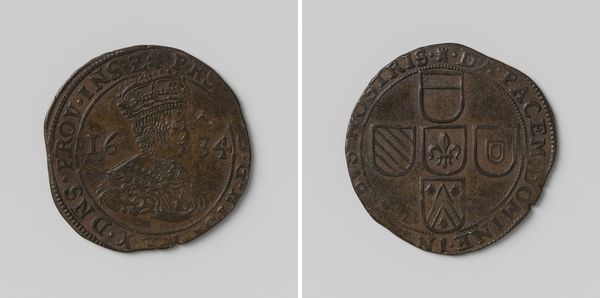
Francois-Hercule, hertog van Anjou, graaf van Vlaanderen, munt van twaalf mijten, geslagen te Gent 1582
0:00
0:00
print, metal, engraving
# print
#
metal
#
11_renaissance
#
engraving
Dimensions: diameter 2.7 cm, weight 5.78 gr
Copyright: Rijks Museum: Open Domain
This small copper coin, a ‘twaalf mijten’, was struck in Ghent to honor François-Hercule, Duke of Anjou. Though unsigned, it would have been made by a skilled die cutter, who carefully engraved the design in steel. The coin was then cast, likely using a mold. The material itself is far from precious. As such, it speaks to the expanding monetary system of early modern Europe. Its value as currency was more symbolic than material, a sign of royal authority. The act of minting money was a carefully guarded privilege, and the coin is stamped with the ruler’s insignia to declare it as such. Consider the amount of labor involved. From mining the metal, to striking the die, to casting the coin, to circulating it in the market – countless hands touched this humble object. By attending to material and process, we can recover social and economic histories that would otherwise remain invisible.
Comments
No comments
Be the first to comment and join the conversation on the ultimate creative platform.
